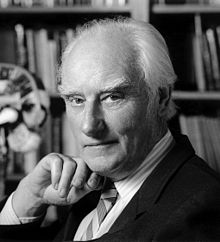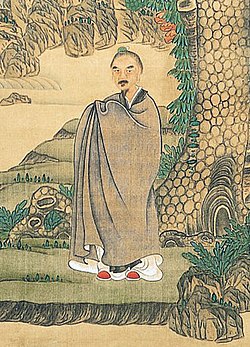Roger Griffin is the author of several studies of fascism, including
The Nature of Fascism (1991, 1993), and contributor to
Contemporary Political Ideologies (1993). He is Principal Lecturer in the Department of History at Oxford Brookes University.
Table of Contents
General Introduction
PART I: FASCISM IN ITALY
Introduction
A. Fascism as an Oppostion Movement
Introduction
i. Pre-1918 Tributaries of Fascism
1.The War as a Source of National Renewal , Giovanni Papini
2.The War as a Proletarian Cause , Revolutionary Syndicalism
3.The War as the Catharsis of Italian Society , Filippo T. Marinetti
4.The War as a Revolutionary Event , Benito Mussolini
5.'Trenchocracy' , Benito Mussolini
6.The Futurist Vision of the New Italy , Political Futurism
7.Alfredo Rocco
8.The War as the Midwife of a New Italian People , Roberto Farinacci
ii Fascism in Opposition 23 March 1918 - 27 October 1922
9.San Sepulcro Fascism , Benito Mussolini
10.The Regency of Fiume as the Harbinger of the New Italy , Gabriele D'Annunzio and Alceste De Ambris
11.The Nationalist Blueprint for a New Italy , The Italian Nationalist Association
12.The Squadistri as the Revolutionaries of the New Italy , Mario Piazzesi
13.Fascism as the Victory of the New Italy , Luigi Federzoni
14.The Incorporation of the Peasantry into the Italian Nation , Benito Mussolini
15.Fascism's Myth: The Nation , Benito Mussolini
iii. The Coalition Government 30 October 1922 - 3 January 1925
16.A Futurist Portrait of the New Prime Minister of Italy , Filippo T. Marinetti
17.The New State Born of Syndicalism and Statism , Sergio Panunzio
18.Fascism's European Mission , Curzio Malaparte
19.The End of the Liberal Regime , Benito Mussolini
B. Fascism in Power January 1925-April 1945
Introduction
i. The Formative Years of the 'Totalitarian' Regime January 1925-February 1929
20.Fascism as a Total Conception of Life , Giovanni Gentile
21.Fascist Mysticism , Italian Fasci Abroad
22.Fascism as the Creator of the Third Italian Civilization , Benito Mussolini
23.The Leader as the Voice of the Reborn Race , Augusto Turati
24.The Strength in Numbers , Benito Mussolini
25.The Anti-Modernist Aesthetic of Strapaese , Mino Maccari
26.The Modernist Aesthetic of Novecento , Marco Bontempelli
27.The University as the Incubator of a Fascist Elite , Giuseppe Bottai
28.The Achievements of the Fascist Revolution , Benito Mussolini
ii The Period of Consolidation 1930-1934
29.Towards a Fascist Europe , Asvero Gravelli
30.The Role of Youth under Fascism , Giovanni Giurati
31.Fascist Corporativism as the Key to a New International Order , Ugo Spirito
32.Mussolini's Century , Giuseppe Bottai
33.Going to the People , Achille Starace
34.The Birth of a New Civilization , Benito Mussolini
iii Imperialist Expansion and Alignment with Nazism 1935-1939
35.The Vital Need for Empire , Benito Mussolini
36.Two Marching Songs of Fascist Soldiers Abroad
(a) From the Abyssinian Campaign
(b) From the Spanish Campaign
37.The Autarkic Mentality and the New Fascist Order , Edmondo Rossoni
38.Blood Brothers: Fascism and Nazism , Benito Mussolini
39.The Introduction of Fascist Racial Policy , Gioacchino Volpe
iv Fascism at War 1940-1943
40.People of Italy! Run to your Arms! , Benito Mussolini
41.Safeguarding Europe's Birthright against the Jewish Conspiracy , Alfredo Cioffi
42.The New Europe which will Arise from the Axis Victory , Carlo Costamagna
v The Italian Socialist Republic 1943-1945
43.Fascism Reborn , The Fascist Republican Party
44.The Greatest Massacre of All Time: Democracy , Benito Mussolini
45.What Might Have Been: Axis Europe , Benito Mussolini
PART II: FASCISM IN GERMANY
Introduction
A. German Fascism before the Nazi Seizure of Power
Introduction
i Pre-1914 Precursors of German Fascism
46.The Redemptive Mission of German Culture , Richard Wagner
47.The Need to Transcend Liberalism , Paul De LaGarde
48.The Rebirth of German Genius , Julius Langbehn
49.Planting the New Reich , Stefan George
50.The Need for the Nation to be Healed , Theodor Fritsch
ii Non-Nazi German Fascisms
51.The Resurgence of the West , Otto Dickel
52.The Eternal German Reich , Arthur Moeller Van Den Bruck
53.The Organic German Nation , Edgar Jung
54.The Great War: Father of a New Age , Ernst Junger
55.The Germany of the Freikorps , Ernst Von Salomon
56.The Emergence of a New Type of Human Being , Ernst Junger
57.The Prussian Spirit: Salvation of the White Race , Oswald Spengler
58.The German Knight as the Key to Europe's Recovery , Otto Strasser
iii Nazism before 1933
59.The Mission of the Nazi Movement , Adolf Hitler
60.Barren Trees , Franz Pfeffer Von Salomon
61.'Christ-Socailism' , Joseph Goebbels
62.Let there be Light , Gottfried Feder
63.Motherhood and Warriorhood as the Key to a National Socialism , Gregor Strasser
64.Nordic Thinking and the German Rebirth , Hans F.K. Gunther
65.Breeding a New Nobility , R. Walther Darre
66.The New Human Synthesis , E. Gunther Grundel
B. German Fascism in Power 1933-1945
Introduction
i The Establishment of the Third Reich 1933-1935
67.German Rebirth , Alfred Rosenberg
68.The Third Reich as Savior of the West , Hermann Goering
69.The Total Revolution of National Socialism , Joseph Goebbels
70.The New Breed of German , Gottfried Benn
71.The New German Woman , Paula Siber
72.The Legal Basis of the Total State , Carl Schmitt
73.The Place of Art in Germany's Political Reawakening , Adolf Hitler
ii The Period of Consultation 1936-1939
74.Soldierly Economics , Werner Daitz
75.The Joy of the National Socialist Economy , Robert Ley
76.The Expansionary Spirit of a Rejuvenated People , Paul Ritter
77.Nazism's World Crusade against the Jews , Hammer Press
78.The Divine Mission of the SS , Heinrich Himmler
79.The Role of Youth in Perpetuating the Third Reich , Willi F. Konitzer
80.The Successful Cleansing of German Culture , Helmuth Langenbucher
81.National Socialism as the Custodian of European Being , Martin Heidegger
82.The Third Reich as the Cure for the European Sickness , Christoph Steding
iii The Third Reich at War 1939-1945
83.The New European Order , Paul Herre
84.A National Socialist Common Market , Hans S. V. Heister
85.Improving the Stock , Walter Gross
86.The True Meaning of the War , Joseph Goebbels
87.The Ultimate Turning-Point: Total War , Robert Ley
88.Moral Dilemmas , Heinrich Himmler
89.Heimat , Schwarzes Korps
90.The Rebirth of National Socialism , Adolf Hitler
PART III: ABORTIVE FASCISMS 1922-1945
Introduction
A. European Fascisms
i. Britain
91.Christ, Nietzsche, and Caesar , Oswald Mosley
92.Towards a Fascist Europe , Oswald Mosley
93.A Corporate Britain , Alexander Raven Thomson
94.Britain Awake! , E.D. Randell
95.A Spiritual Typhus , Arthur Kenneth Chesterton
96.Hitler Shows the Way , William Joyce
ii Ireland
97.The New Corporate Ireland , Eoin O'Duffy
iii Spain
98 Ramiro Ledesma Ramos.The Voice of Spain
99.Total Feeling , Jose Antonio Primo de Rivera
100.Bread and Justice , Jose Antonio Primo de Rivera
101.A New Breed of Spaniards , Antonio Vallejo-Nagera
iv Portugal
102.The Wind of Change , Rolao Preto
103.Ersatz Fascism , Rolao Preto
v France
104.Empty Portfolios , George Valois
105.Saving France , Jacques Doriot
106.The European Revolution and the New State , Marcel Deat
107.The Rebirth of European Man , Pierre Drieu La Rochelle
vi Belgium
108.The Revolution of Souls , Leon Degrelle
109.Fascism's Century , Jose Streel
vii Norway
110.The Nordic Revival , Vidkun Quisling
111.A Greater Norway , Vidkun Quisling
viii Finland
112.The Battle for the New Finland , Lapua
113.The Revolution of the Finnish Heart , Elias Simojoki
ix Estonia
114.A New Estonia , Evl
x Latvia
115.A Latvian Latvia , Gustavs Celmin
xi Romania
116.The Romanian Legionary's Mission in Spain , Ion Mota
117.The Resurrection of the Race , Corneliu Codreanu
xii Hungary
118.Hungarism , Ferenc Szalasi
B. Non-European Fascisms
i. South Africa
119.The Reawakening of the Boerevolk , Ossewabrandwag
ii Chile
120.Chilean Action and National Regeneration , Carlos Keller
121.The Soul of the Race , Jorge Gonalez
iii Brazil
122.A Fourth Era of Humanity Dawns , Plinio Salgado
123.The Soul of the Nation Awakens , Plinio Salgado
iv Japan
124.The Need for a Totalitarian Japan , Nakano Seigo
125.Write Your Own Mein Kampf , Nakano Seigo
PART IV: THEORIES OF FASCISM
Introduction
A. Reactions to Fascism 1920-1945
Introduction
i Ambivalent or Positive Reactions to the Spread of Fascism
126.Black Sheep , Vilfredo Pareto
127.A Plague of Amateur Mussolinis , Kenneth Roberts
128.A Sunny Disposition , Robert Michels
129.The Italian Volksstaat , Johann W. Mannhardt
130.The Italian Experiment , Erwin von Beckerath
131.To Each Country its Own Fascism , James Strachey Barnes
132.The Makers of Europe , Giuseppe Borgese
133.A Sense of Humor , Sir Charles Petrie
134.A Bad Good Thing , H.G. Wells
ii Interpretations of Fascism by Marxists
135.Three Comintern Responses to Fascism
(a) Opening the Door to Fascism
(b) White Terror
(c) Fruit of the Womb
136.Erroneous Definitions , Palmiro Togliatti
137.The Purging Fires of Fascism , R. Palme Dutt
138.The Return of the Dark Ages , E. J. Strachey
iii Democratic Critiques of Fascism
139.Tribal Loyalties , G.D.H. and M.I. Cole
140.Dragon's Teeth , R.A. Brady
141.The Hopeless Task , Karl Polanyi
142.Rabbits Ruled by Stoats , George Orwell
143.Black Magic , Peter Drucker
144.The Iron Heel , Max Horkheimer
iv Four Wartime Analyses of Fascism
145.Forcing Elephants into Foxholes , Wilhelm Reich
146.The Fear of Freedom , Erich Fromm
147.Market Forces , Harold Laski
148.Rationalism Debunked , Talcott Parsons
B. Post-War Judgements on Fascism
Introduction
i Some Approaches to Fascism
149.Paradigms of Fascism , Bernt Hagtvet and Stein Larsen
a. Marxist Approaches
150.The View From Moscow , A Soviet Political Dictionary
151 Joachim Petzold.The View from East Germany
152.The View of a Western Marxist , Martin Kitchen
b. Fascism as the Product of Structural Forces
153.Extremism of the Centre , Seymour M. Lipset
154.Defective Nation-Building , Bernt Hagtvet and Stein Rokkan
155.Redemptive Potential , Geoffrey Eley
c. Psycho-Historical Approaches
156.Fear and Destructiveness , The Frankfurt School
157.Making Sense , Gerald M. Platt
158.Raising the Dead , Klaus Theweleit
d. Modernization Theories
159.Blood and Death , Barrington Moore
160.Utopian Anti-Modernism , Henry A. Turner Jun
161.Fascist Modernity , Emilio Gentile
ii Some Individual Theories of the Fascist Minimum
162.Resisting Transcendence , Ernst Nolte
163.The Total Charismatic Community , A. James Gregor
164.The Latecomer , Juan B. Linz
165.Verbal Revolutionarism , Renzo de Felice
166.A Mulish Concept , Gilbert Allardyce
167.A Third Way , George L. Mosse
168.A New Nationalist Authoritarian State , Stanley Payne
160.A New Civilization , Zeev Sternhell
170.The New Synthesis , Roger Eatwell
PART V: POST-WAR FASCISMS
Introduction
i Verdicts on the 'Fascist Era' from Veteran Fascists
171.Fascism: Myth and Reality , Julius Evola
172.The Third Reich: The Triumph of the Demagogues , Ernst Niekisch
173.Lenin was Right , Maurice Bardeche
174.The Ideals of the Fascist Era , Leon Degrelle
175.The Lunacy of Fascism and Nazism , Arthur Kenneth Chesterton
176.Hubris and Miscalculation , Oswald Mosley
ii Discourses of Post-War Fascism
(a) Universal Nazism
177.The Revival of National Socialism , Colin Jordan
178.A Racist Catechism , The West European Foundation
179.How to Save Europe , Guy Amaudruz
(b) Holocaust Denial
180.The Miracle of the Telephone Box , Leon Degrelle
181.A Monumental Lie , Thies Christophersen
182.An Ever-Flowing River , John Day
(c) Historical Revisionism
183.The Bicycle Thief , David Irving
184.Laying it on the Line , David Irving
185.From Class War to Race War , Ernst Nolte
186.Truth and Fiction , Gerhard Frey
(d) Eurofascism
187.The European Revolution , The Malmo Manifesto
188.The True Europe's Revolt against the Modern World , Juliys Evola
189.Europe a Nation , Oswald Mosley
(e) The New Right
190.Regenerating History , Alain de Benoist
191.The Metapolitical Rebirth of Europe , Pierre Krebbs
192.A Breath of Fresh Air , Michael Walker
(f) The Conservative Revolution
193.German Nihilism , Armin Mohler
194.The Will to Modernity of the Conservative Revolution , Louis Dupeux
195.Heroic Realism , Robert Steukers
(g) Third Position
196.The European Genius and the Rediscovery of the Sacred , Adolfo Morganti
197.The Political Soldier and the National Revolution , Derek Holland
198.A Community of Destiny , Groupe Union Defense
iii Contemporary Expressions of Fascism
(a) Ideological Fascism
199.Songs for Europe , Skrewdriver
200.The Immortal Principle , Hartwig Huber
201.The Greening of Nazism , Padraig Cullen
202.Spiritual AIDS , John Tyndall
(b) Militant Fascism
203.Blood, Soil, and Faith , L'Oeuvre Francaise
204.The Cleansing Hurricane , William Pierce
205.Patriots of the World Unite! , Paymat
206.God's Own , Afrikaner-Weerstandsbeweging
207.The Romanian Ethnocratic State , Noua Dreapta
(c) Electoral Fascism
208.Living Stones of the New Spain , Frente Nacional
209.The European Home , Nationaldemokratische Partei Deutschlands
210.Saving the Nation , British National Party
211.For a New Italy , Movimento Sociale Italiano
212.King Kong Meets his Match , Russia's Liberal Democratic Party
EPILOGUE
213.The Deadly Trunk of Fascism , Primo Levi
Select Bibliography
Acknowledgements
Index--- http://www.cw.com.tw/blog/blogTopic.action?id=9&nid=2228法西斯式的貪腐經濟
作者:南方朔 2012/08/10
黨官僚、政客互喬利益,集結勢力。
這種少數人綑綁的利益體,卻傷害了大多數人民。
古羅馬時代,執政官巡行時,走在前面的開道人員中,一定有一個官員手持「束棒」(fasces),代表最高權威。「束棒」是一束櫸木棍,它由紅帶子綑綁在一起,中間則是一個斧頭柄。
「束棒」的象徵意義是,老百姓乃是散漫的木棒,它只有和代表權威的斧頭綑綁、團結在一起,才有力量。
一九一九年,「束棒」的意義被義大利的墨索里尼發揚光大,成了二十世紀上半期,對全球影響很大的法西斯。
法西斯既是政治運動,也是經濟運動。法西斯認為,國家的經濟活動乃是政治的黏著劑。因此,不但要發達國家資本,甚至要透過政府的經濟角色,將散漫的社會綑綁起來。
於是,黨官僚及政客透過運作,分配經濟資源和公共契約給自己人的公司。透過利益結合,將大家綑綁在一起,遂被認為是一種正當的方法。這也是法西斯體制下,黨官僚及政客致力於「喬利益」的原因。
這種「國家社會主義」的政治,由於受到經濟利益影響,當然系統性的腐化橫行。而它的經濟受到政治的干擾,當然成本大、效率差。
在二十世紀上半葉,國際競爭還不嚴重,因此它能良好運作。只是到了二十世紀後期,國際競爭激烈,而且民主政治深化。這種喬利益的制度,在經濟上,因成本過大而難以為繼;而在政治上,則普遍被認為是貪腐。
但在以前的法西斯國家,這種喬利益的方法,的確是被當作政治的黏著劑。不但歐洲法西斯國家:義大利、西班牙如此,亞洲及拉丁美洲具有法西斯特性的國家也如此。
前幾年,我讀了當代反貪專家李維(Michael Levi),和尼爾肯(David Nelken)所編的論文集《政治的貪腐及貪腐政治》。他們指出,歐洲法西斯經濟裡,那種黨官僚及政客喬事情、抽佣金的方式,乃是近代政治最壞的傳統。它造成貪污的體制化。
這也是一九九○年代,全球反貪都把「喬事情、分利潤」換成「政治獻金」列為最大重點的原因。
因此,對法西斯經濟的運作模式,世人應加強反省。法西斯主義強調國家整體利益,以不自由、不民主的方式,選擇性地瓜分國家利益,靠著利益共享,把這些人綑綁在一起。
但任何人都知道,這種綑綁可以綁出很大的勢力,但綁不成一個國家。它所造成的貪腐、無效率,反而會傷害到沒有綁在一起的大多數人民。
法西斯的這種喬利益、綁利益的運作方式,乃是歐洲許多有法西斯傳統的國家,如義大利、西班牙、希臘等,每況愈下的主因。
二十世紀上半葉,法西斯的政治及經濟思想曾影響到許多後進國。當時的中華民國,即很多事都學法西斯,在經濟上影響極大。瓜分利益、喬國家的採購契約,即是法西斯時代的殘餘。這也是中華民國轉型最需要揚棄的壞習慣!






























 查看該圖像
查看該圖像
































